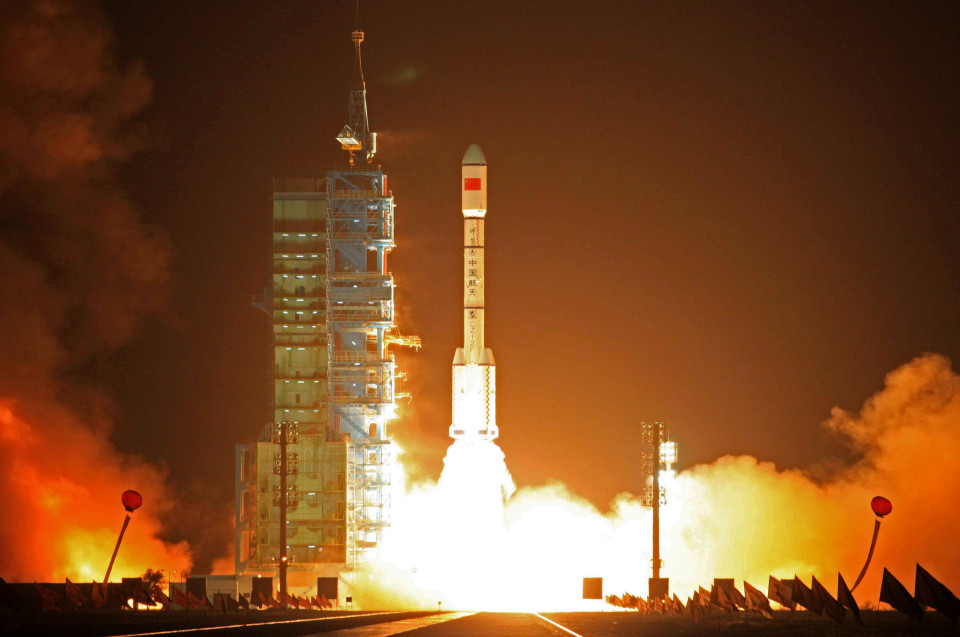Defense Secretary Esper: China, Russia have “killer satellites” in space
09/18/2020 / By Franz Walker

Secretary of Defense Mark Esper accused China and Russia of “weaponizing” space, claiming that both countries are now operating “killer satellites.”
In his warning, issued at the Air Force Association’s Virtual Air, Space & Cyber Conference on Wednesday, Sept. 16, Esper claimed that America’s long-standing adversaries have “turned a once peaceful arena into a war-fighting domain” all in an effort to “erode our long-standing dominance in air-power.”
“They have weaponized space through killer satellites, directed energy weapons, and more in an effort to exploit our systems and chip away at our military advantage,” he said.
Killer satellites being tested
Directed energy weapons are those that use converted chemical or electrical energy and focus it on a target, resulting in physical damage. Already, the U.S. military is using a number of these, such as high energy lasers for anti-aircraft and anti-missile defense.
These weapons, according to Dr. Michael D. Griffin, undersecretary of Defense for Research and Engineering, can be highly effective against swarm attacks.
“We often think about directed energy as large lasers, and I’ve certainly been involved with some of that for decades, but we also have high power microwaves which can be very effective as what we call an electronics kill,” Griffin said in 2018.
“That sort of thing – it’s really hard to envision handling swarming attacks by purely kinetic means – so that’s one of the future threats that I think we face.”
Swarm attacks and missiles, however, don’t seem to be what the directed energy weapons that Russia and China are putting into space are for. Rather, they’re thought to be designed to take out other satellites.
On July 23, the U.S. Space Command (SPACECOM) issued a statement saying that Russia had tested an anti-satellite weapon in orbit. According to the statement from SPACECOM, the Russian inspector satellite Cosmos 2543 was testing what was thought to be a high-speed projectile weapon to attack other satellites.
“The Russian satellite system used to conduct this on-orbit weapons test is the same satellite system that we raised concerns about earlier this year, when Russia maneuvered near a U.S. government satellite,” said Gen. John “Jay” Raymond, SPACECOM Commander and U.S. Space Force Chief of Space Operations.
“This is further evidence of Russia’s continuing efforts to develop and test space-based systems, and consistent with the Kremlin’s published military doctrine to employ weapons that hold U.S. and allied space assets at risk.”
Russia has deployed weapons in space before
Russia’s efforts to deploy space-based weaponry dates back to the 1970s. On June 25, 1974, the then Soviet Union launched the Salyut 3 space mission. While a civilian mission on the surface, in reality, the mission, also known as Almaz 2, was a military one. The space station was equipped with a “self-defense gun” – an aircraft cannon from a bomber adapted for use in space.
The gun, however, was never tested with any cosmonauts on board due to the vibrations it caused. It was, however, fired by remote from the ground once the last manned mission to the station had departed, before the station was finally deorbited in 1975.
Following the end of the Salyut 3 mission, plans were made to equip later Almaz stations with a pair of missiles instead of the cannon, but these plans never came to fruition as the Almaz program was permanently grounded before the upgraded station could be launched in 1978.
While Salyut 3 was the last confirmed instance of a weapon in space, it’s not hard to imagine the Russians making further developments in this field.
Role of fledgling Space Force in maintaining space superiority emphasized
During the virtual conference, Esper emphasized the role of the U.S.’s fledgling Space Force, officially launched late last year, in maintaining American space superiority.
“Amid grave threats to our national security, American superiority in space is absolutely vital,” said President Donald Trump when he signed the legislation creating the new branch.
Meanwhile, the Defense Space Strategy, released earlier this year, outlines what the U.S. needs to do to achieve a “comprehensive military advantage” in space within 10 years.
For the Space Force, three key objectives have been identified: to maintain the U.S.’s space superiority; to provide space support to all joint military operations; and to “ensure space stability” – deterring aggression and upholding international agreements in space with its presence in a manner similar to how the U.S. Navy polices international waters.
According to Esper, he was proud of the progress that had been made in implementing the strategy. He said that this would “ensure our dominance across all domains.”
The day before Esper made his statement, Space Force head Gen. John Raymond also talked about the progress made by his branch.
Here, Raymond revealed that the Space Force’s Space Based Infrared System satellites were used to detect Iranian missiles aimed at American war plans in January. In particular, he praised the 2nd Space Warning Squadron at Buckley Air Force Base, Colorado.
“They operated the world’s best missile warning capabilities and they did outstanding work, and I’m very very proud of them,” he said at the conference.
Moving forward, however, units like the 2nd are going to have to work even harder, especially once they need to start defending space from killer satellites from Russia and China.
Follow Space.news to learn more about the militarization of space.
Sources include:
Space.Au.AF.mil[PDF]
Tagged Under: China, defense, military, military tech, national defense, national security, outer space, President Trump, Russia, satellite, Secretary of Defense, Space, space force, War, weapons tech
RECENT NEWS & ARTICLES
COPYRIGHT © 2017 FUTURETECH.NEWS
All content posted on this site is protected under Free Speech. FutureTech.news is not responsible for content written by contributing authors. The information on this site is provided for educational and entertainment purposes only. It is not intended as a substitute for professional advice of any kind. FutureTech.news assumes no responsibility for the use or misuse of this material. All trademarks, registered trademarks and service marks mentioned on this site are the property of their respective owners.




















